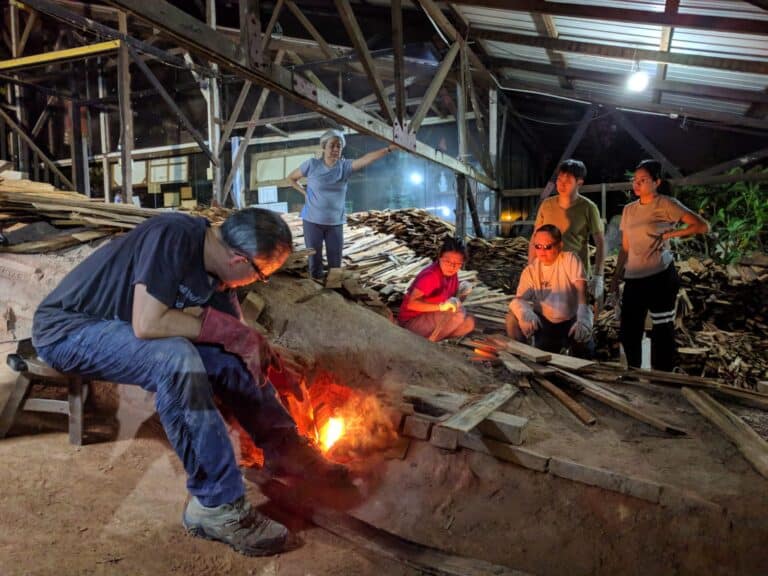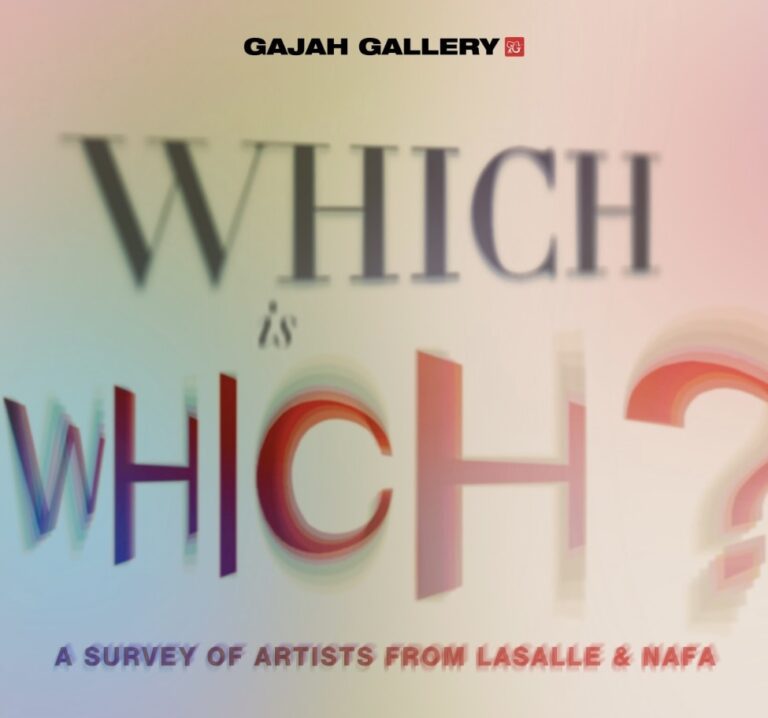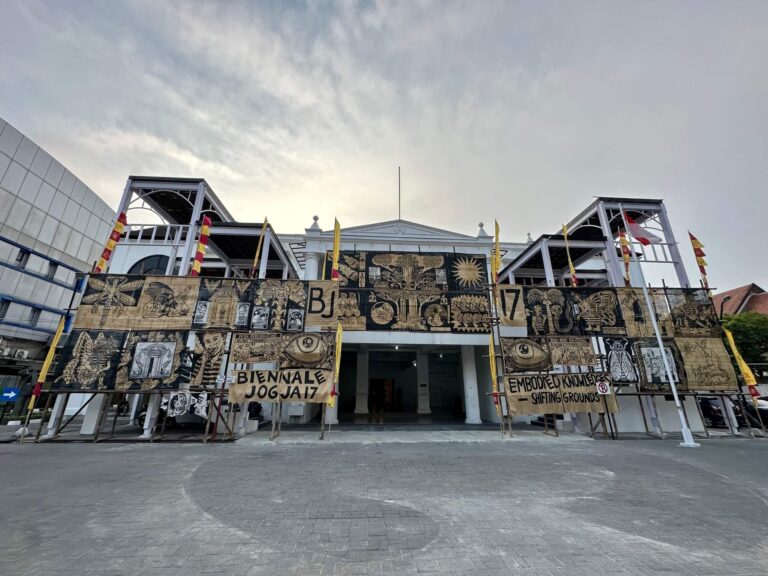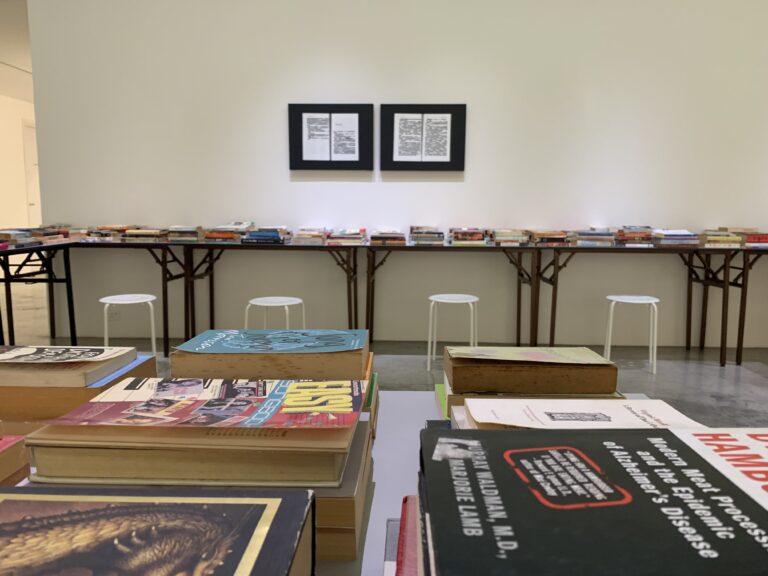The month leading up to Pink Dot in Singapore is always one to remember, with themed art exhibitions and activities that celebrate the identities of LGBTQ+ individuals, acknowledging their struggles and stories, and bringing communities together.
Out of all the events last year, one moved me the most: the Rainbow Families Campaign, which was hosted at the now-defunct Projector X: Riverside. For those who don’t already know, Rainbow Families is a “pride collective that advocates for the love and acceptance of LGBTQ+ people in Singapore through events, exhibitions, and online content.”
I attended the exhibition with someone dear to me named M. They’ve been my cheerleader in everything that I do (including encouraging me to take the leap as an arts writer!) but haven’t been able to come out to their parents. So when M reached out to me to visit the exhibition with their partner, I said yes.
It was a small but incredibly heart-warming exhibition. Stepping inside revealed several folding screens, on which portraits were displayed. These weren’t any old photographs though: they were from photoshoots from the Rainbow Families Campaign, which depicted members of the LGBTQ+ community and their chosen loved ones—which the Campaign calls “Rainbow Families.”
I relished looking through the portraits, which depicted exuberant individuals posing proudly and embracing their loved ones, full of light and life. Each portrait’s lighting also incorporated the colours of the rainbow, making for a wonderful visually thematic touch.
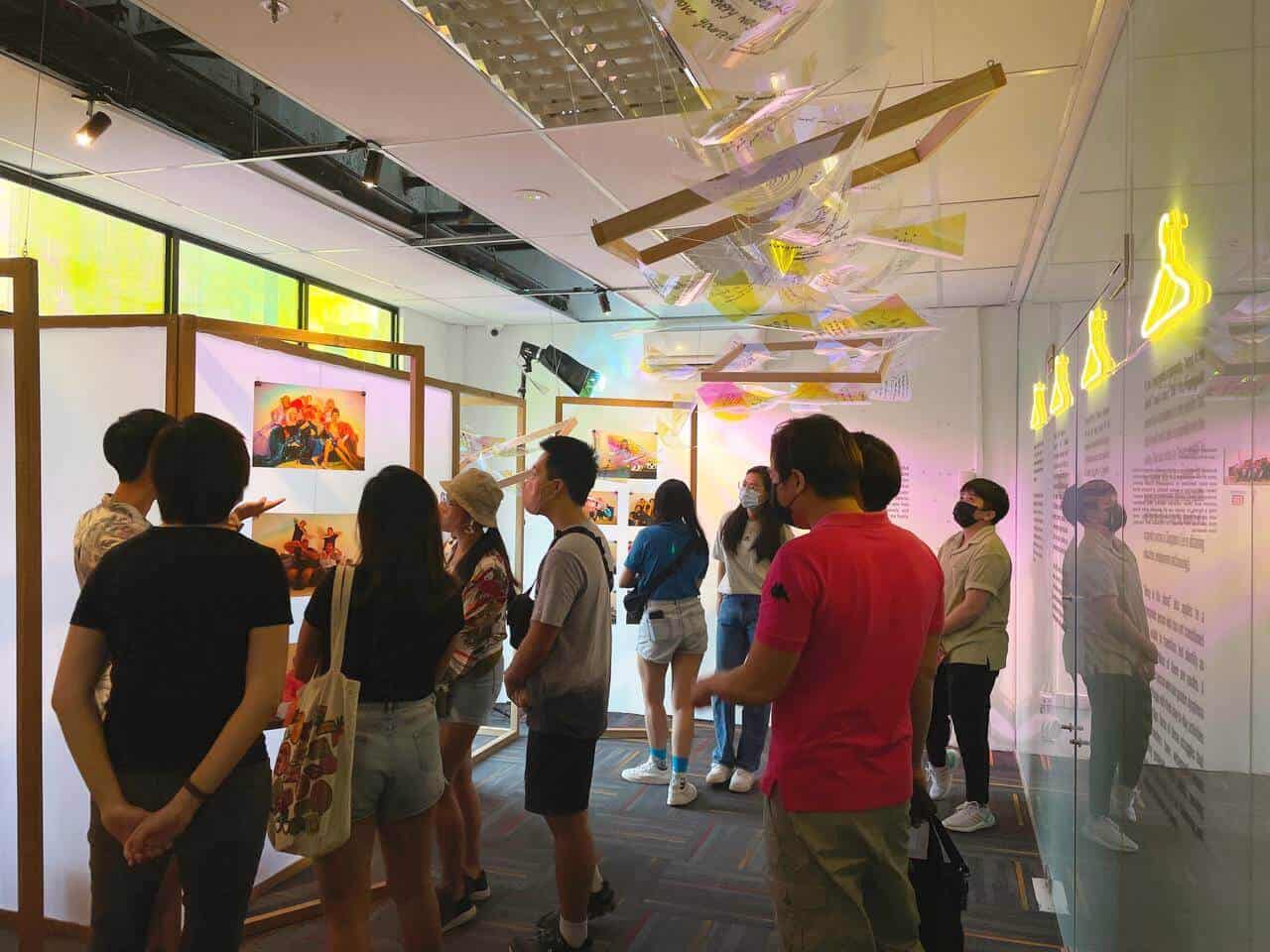
Gleaming iridescent sheets hung from the ceiling, draping the room in an atmospheric rainbow light. As I craned my neck back, I saw that the sheets had messages scrawled on them in black marker ink. Some messages were short, encouraging readers to be happy with themselves and not be concerned about pleasing people, while others were heartfelt manifestos on the embracing of LGBTQ+ identities. These messages were collected from photoshoot participants and were meant to encourage visiting members of the LGBTQ+ community, especially those who may have been struggling with their identities or who were still facing rejection at home.
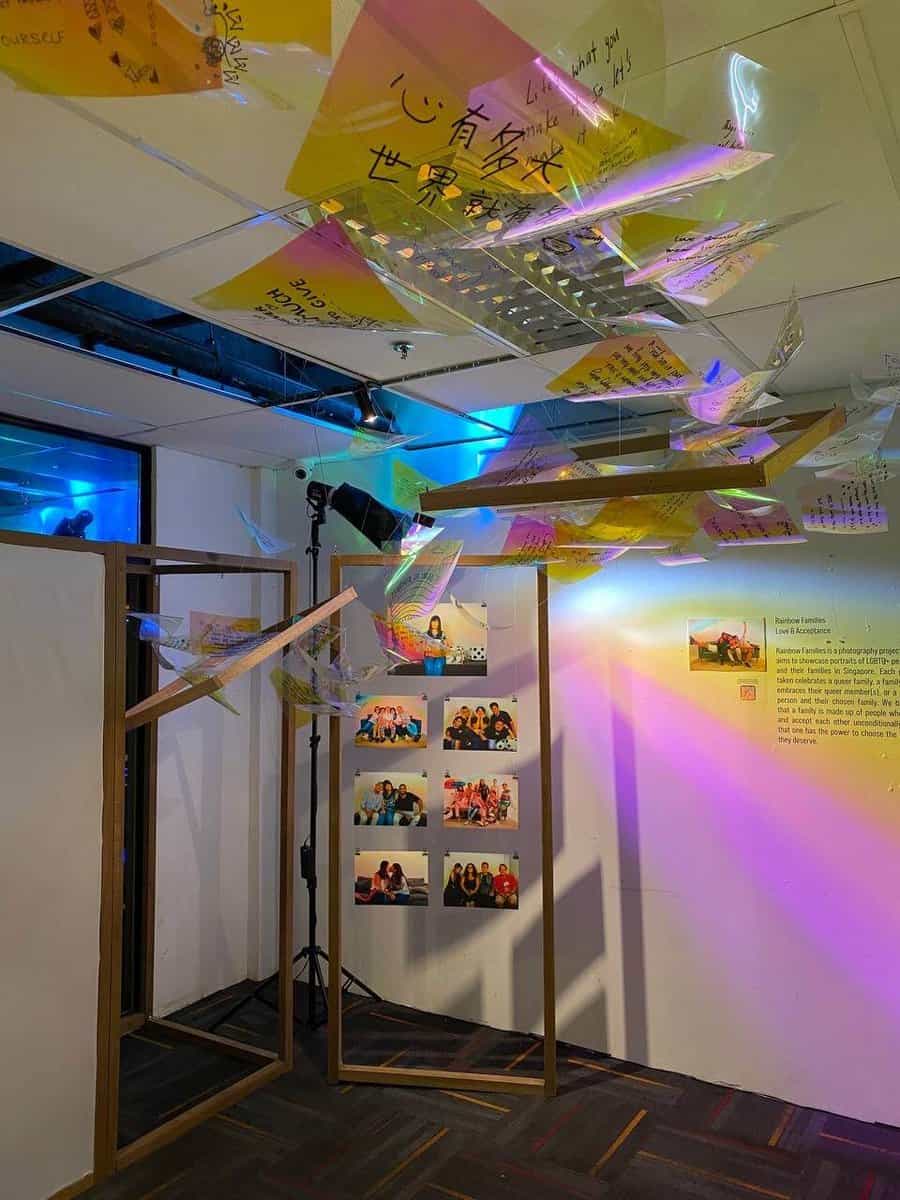
I watched M and their partner hold hands while walking around the exhibition, admiring the infectiously joyful photographs and discussing if they should take part in next year’s photoshoot. I helped to take a photo of them embracing beneath the rainbow lights, and that photograph remains as M’s phone background to this day. It was an immensely moving experience for me, and helped me to understand how much heterosexual cisgendered folks (like myself) take for granted in terms of basic societal and familial acceptance. I could only imagine how the exhibition must have made LGBTQ+ individuals feel; individuals like M could finally see themselves and the people they love reflected in the exhibition.
Part of me wanted to view this as a microcosm of what society at large could be like if we, in legal and social terms, embraced the partnerships that exist beyond the cisgender, heterosexual norm. Could we live in a world where everyone regardless of sexual and gender identity, has the opportunity to feel at home in their own skin?
In November 2022, to the delight of many members and allies of the LGBTQ+ community, Section 377A of the Penal Code (a colonial-era law that criminalised sex between men) was repealed. However, following this, the Singapore parliament made a constitutional amendment to protect the definition of marriage from legal challenges, affirming that marriage was “a union between one man and one woman” ; thus cementing a traditional heterosexual monogamous marriage as the norm. Singapore’s Women’s Charter 1961 also states that “marriages between persons who at the date of the marriage are not respectively male and female are void.” Under the Interpretation Act 1965 a “monogamous marriage” is defined as a “marriage which is recognised by the law of the place where it is contracted as a voluntary union of one man and one woman to the exclusion of all others during the continuance of the marriage.” Singapore also does not recognise civil partnerships, in the same way as say, the United Kingdom.
Even if we step away from the more complicated ideas surrounding the adoption of children and housing and education policies, we can see that even basic rights are sometimes denied to people in relationships that do not fit into the mould of the traditional heterosexual monogamous marriage. In the case of death for example, only “next-of-kin” such as parents, spouses (within the ‘traditional’ definition of marriage), children, grandchildren, grandparents and siblings are permitted to access a death certificate.
While future governments are not restrained from making legislative changes so as to be more inclusive of other definitions of “marriage,” the most recent amendment has sent a message loud and clear: that the notion of the “family” in Singapore–for now at least–is underpinned by the concept of marriage between a man and a woman. What then does this mean for those in other kinds of partnerships, who dream of starting their own families?
Hoping to broaden our understanding of family beyond the traditional (read: cisgender, heteronormative) family unit is this year’s Rainbow Families Campaign. While this year’s Campaign will still offer and showcase Rainbow Families photoshoots, it will also feature an “immersive and interactive art exhibition” titled Rainbow Families: Dear Home in an effort to explore what the idea of ‘home’ means to LGBTQ+ people in Singapore.
I had the pleasure of speaking with the Campaign’s leads Koh Zhi Kai (he/him) and Teo Yu Sheng (he/him) about the Campaign’s origins, what we can expect this year, and how the repeal of Section 377A has impacted the Campaign’s future plans—read on to learn more about this meaningful project.
This year marks the second edition of the Rainbow Families Campaign after the first one was exhibited at Projector X: Riverside last year. Can you walk us through how the Rainbow Families Campaign was conceptualised and developed?
Koh Zhi Kai (Koh): In 2022, the Rainbow Families team was formed when I conceptualised a photo series where LGBTQ+ persons were tinted with a live ‘rainbow’ effect.
The rainbow isn’t just a symbol of the LGBTQ+ community, we also wanted to challenge the common negative or melancholic representations of LGBTQ+ people here in Singapore with vibrant splashes of colour.
When the team came together, the idea expanded. We wanted to capture not just queer individuals, but families in Singapore that love and accept their queer members. This was a strong message that resonated with everyone on our team, and it continues to be a central part of what Rainbow Families represents.
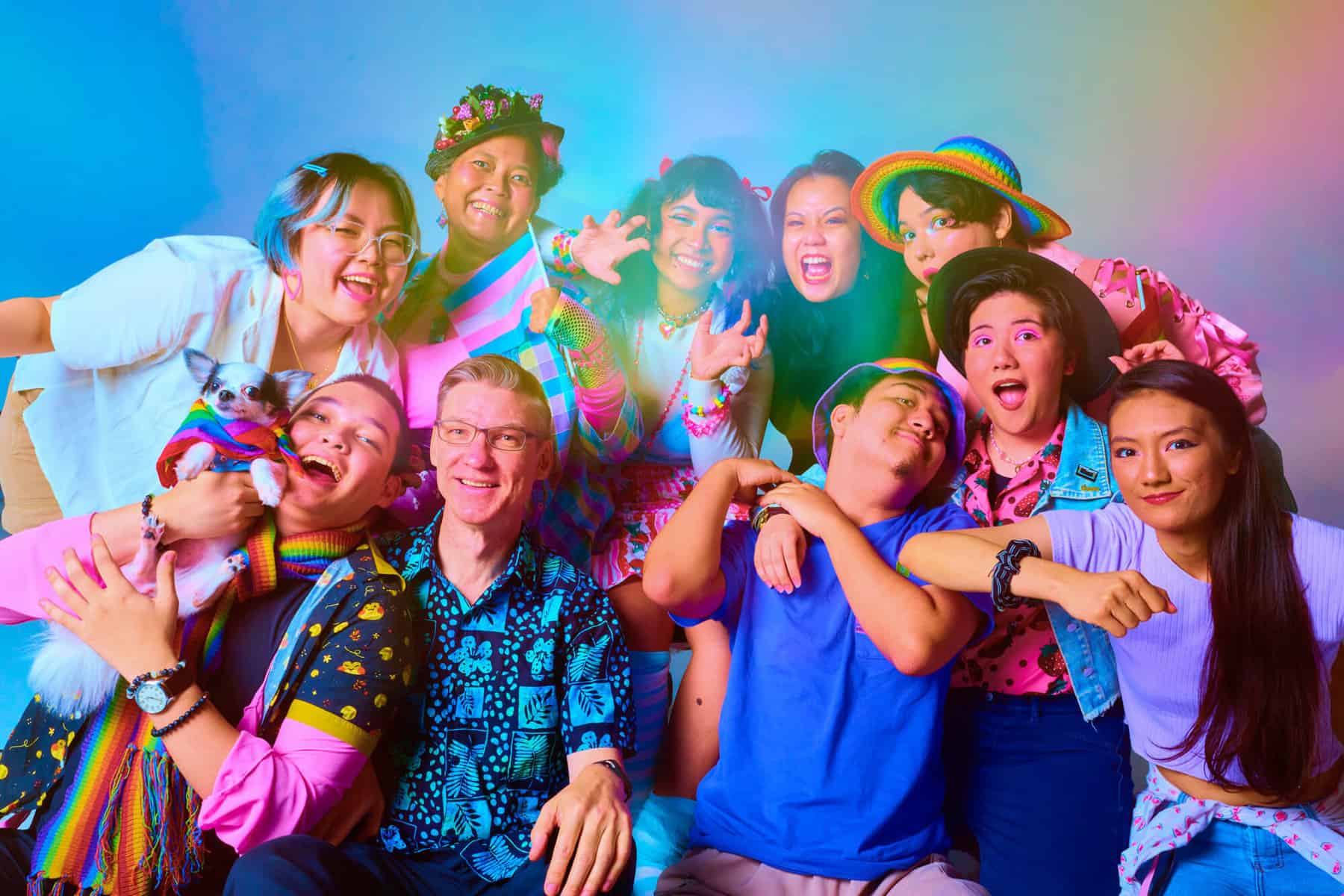
Firstly, can you walk us through what makes a ‘Rainbow Family’? And why specifically was portrait photography chosen to depict Rainbow Families?
Teo Yu Sheng (Teo): A rainbow family is one that unconditionally loves and accepts all its queer members. It could be your birth family, extended family, chosen family, and even your pets.
Portrait photography does many things. For one, it puts faces to what might be a nebulous concept of “family.” On top of that, a family portrait is also often depicted and thought of in an entirely cisgender heteronormative way, and we wanted to break that misconception and show people that families of all types exist and love each other unconditionally.
The end result is a series of beautiful photos that highlights the diversity and unique stories of queer individuals and their families.
This year’s campaign includes an “immersive and interactive art exhibition” titled Rainbow Families: Dear Home, which will take the form of a “familiar home setting” spanning spaces such as the Kitchen, Living Room, Child’s Bedroom and Master Bedroom.
This is quite the expansion from last year’s exhibition which depicted photographs of Rainbow Families, accompanied by accepting messages from the public to members of the LGBTQ+ communities. How did you decide on this home-themed exhibition concept and what was it like working with venue sponsor Projector X: Picturehouse (The Cathay) on it?
Teo: A home should be a safe haven. Yet for many LGBTQ+ individuals, being at home could itself be a source of anxiety and fear, as they often feel the need to hide their identities and repress their sexualities at home, especially in front of those whose opinions they tend to value most—their parents. The exhibition uses different smells, textures, and sounds, as well as a familiar ‘home’ setting to navigate this difficult topic.
Our team landed on the concept of ‘home’ because we felt that the time was ripe to delve into issues of familial and parental acceptance since Section 377A was recently repealed.
This exhibition marks the third time Rainbow Families has worked with The Projector—the first being our first Rainbow Families Exhibition at Projector X: Riverside last June, and the other being Dysphoria/Euphoria (an exhibition displaying the works of eight transgender and gender diverse artists) at Projector X: Picturehouse last November.
The team at The Projector is always so supportive of us, as they not only sponsored the venue but also provided us with insight into organising the exhibition. They have also been very accommodating to us in making our preparation and operation so smooth.
Can you walk us through what each room will feature, and how they can invite visitors—be it members of the queer community, allies or the general public—to consider ideas of ‘home,’ from the perspective of queer individuals?
Koh & Teo: In the ‘Kitchen’, visitors will be invited to participate in a paper craft activity and to sign up for a paper craft workshop. They will learn how to create mini dioramas of their homes based on photographs that they bring with them. The dioramas will then be collected and displayed in the space as a form of community art, and a small queer kampung will grow over the span of the exhibition.
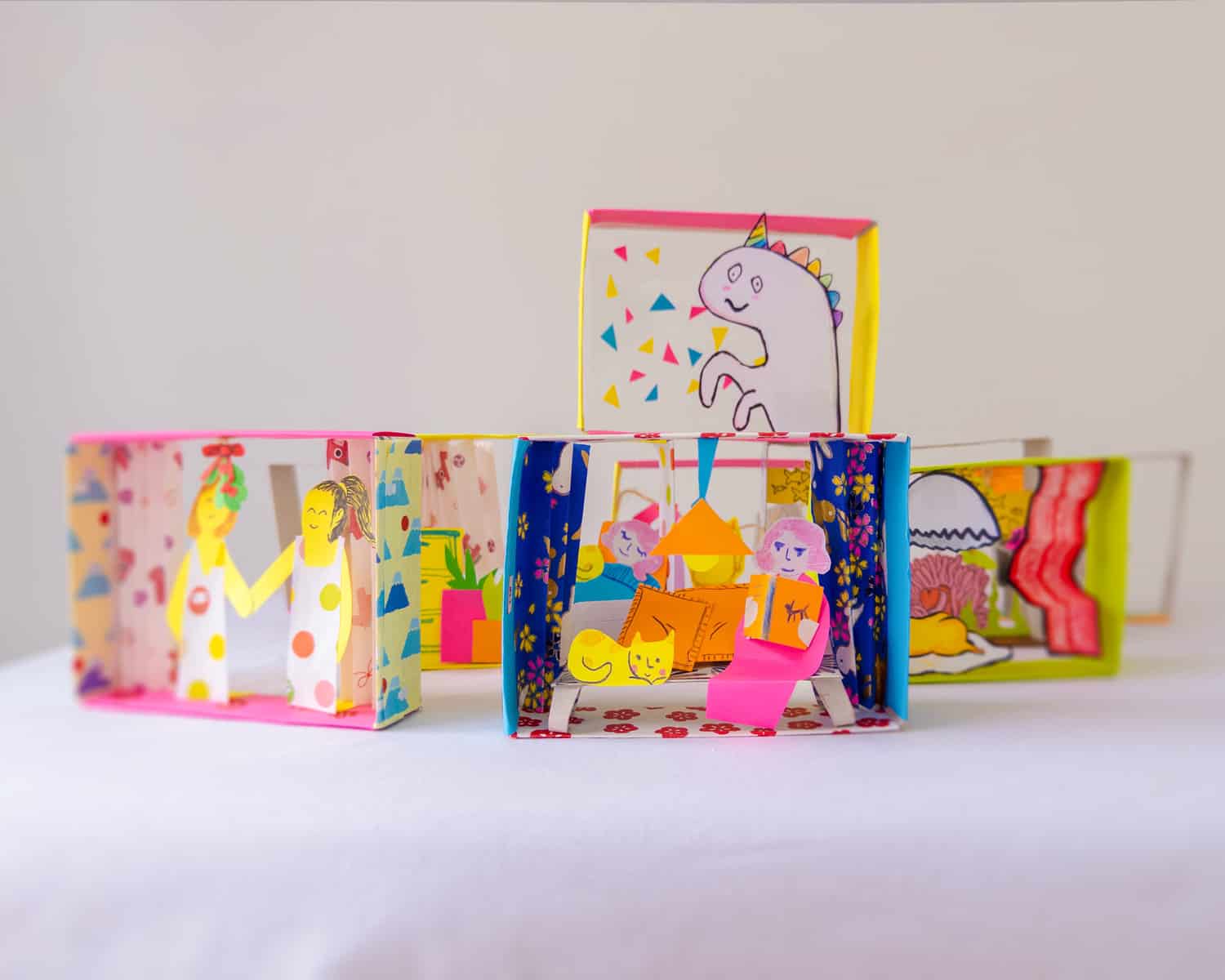
In the ‘Living Room’, visitors will be invited to watch a documentary video (est. 25 mins) that explores the diverse range of acceptance that queer individuals experience from their families and in society. The documentary features conversations with queer individuals, accepting parents, and social workers from Oogachaga (a Singapore-based LGBTQ+ organisation) and The T Project (Singapore’s only social service for the transgender community).
In the ‘Main Bedroom’, visitors will interact with an installation that touches on parents’ innermost concerns about their child. Visitors are prompted to use different words and emotions to complete sentences, with each word bringing a different perspective that parents may have towards their queer child.
In the ‘Child’s Bedroom’, visitors will be invited to write letters expressing their thoughts to their parents, family members, loved ones, or themselves. They will also have the option to share the letter in the space for other exhibition visitors to read or opt to mail it if they wish to keep it private.
There will also be a photo shoot for rainbow-themed family portraits shot with professional photographer Toh Xing Jie to celebrate “pride and familial love”. Toh also shot last year’s campaign; how did he become involved with the project?
Koh: I got to know Toh Xing Jie in 2021’s Miss Equality World Singapore, a transgender pageant event. I was the event’s video sponsor while Toh was the event’s official photo sponsor.
We hit it off immediately, thanks to our [similar] work and values. When I was assembling the team, the first person I looked for to be the principal photographer was Toh, and he readily agreed to jump on board right away after hearing the concept.
What happens during a Rainbow Family photoshoot? How can people get involved?
Teo: During a Rainbow Families photoshoot, people are free to be who they are and dress how they like. This year, we’re using a long exposure technique to paint the colours of the rainbow around the photo.
This expands on last year’s photoshoot where participants had their photos taken against a ‘live effect’ rainbow, which was created by placing reflective iridescent rainbow papers on our lights. This meant that our lights would create rainbows on top of our photograph subjects and backdrop!
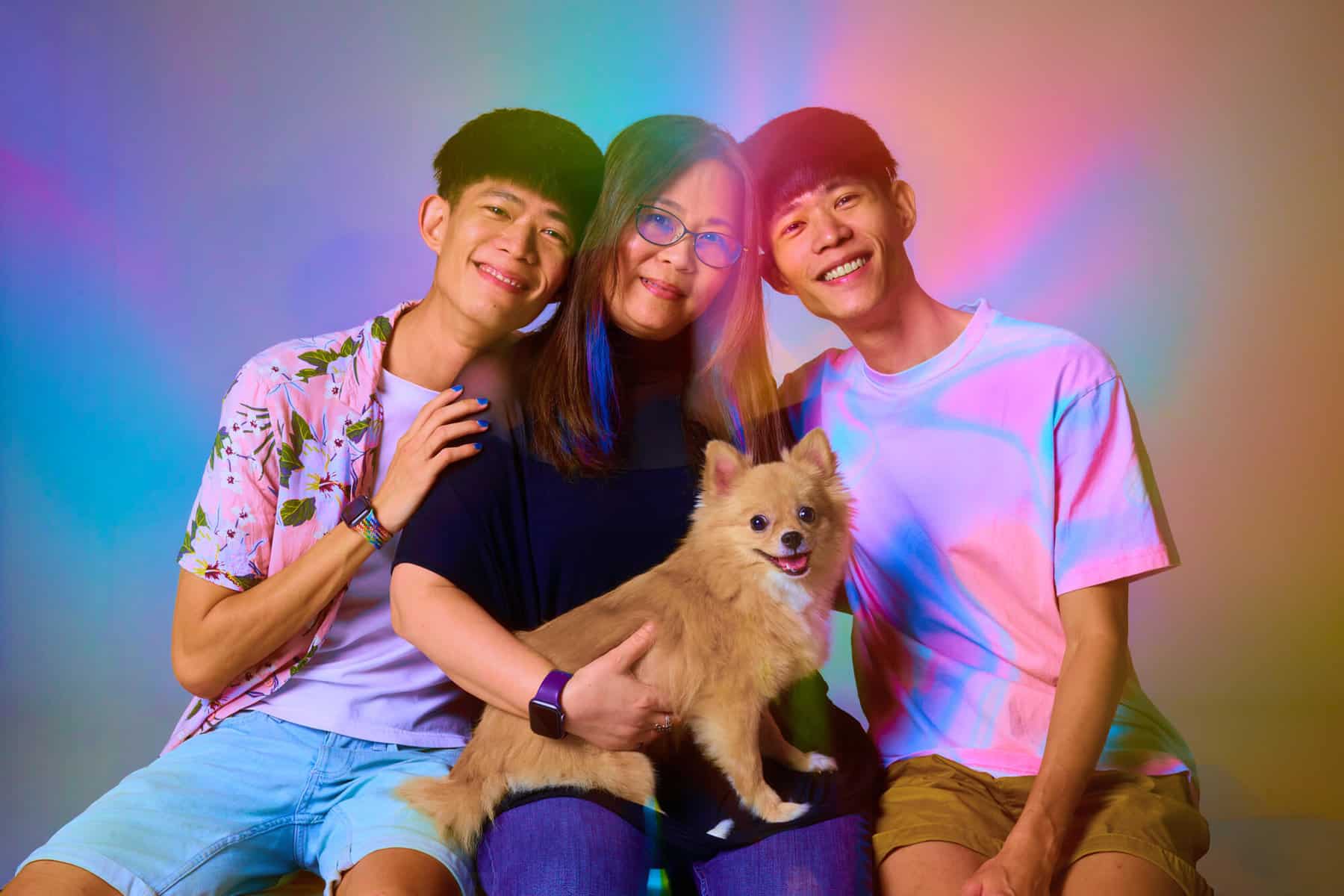
Last year’s inaugural Rainbow Families depicted over 90 rainbow families and over 350 photo participants while garnering 700 exhibition visitors and raising $4600 for LGBTQ+ groups. What was the overall feedback from last year’s campaign like? (Personally, in my social circle, it was something people were glad to see, and I saw it make its rounds on social media quite a fair bit!)
Koh: The response we received for Rainbow Families far exceeded our expectations. One of our main objectives was to start conversations about love and acceptance, and we saw that happen right before us as participants came into the space (during the photoshoot and the exhibition) and had deep conversations with each other and with us.
We were also honoured that a number of queer individuals used the campaign events as a channel to introduce these ideas to their families, who are on the journey of understanding their family members’ identities.
Last year marked the repeal of Section 377A. How has this changed, impacted or even inspired the Rainbow Families Campaign’s future direction?
Teo: The repeal of Section 377A is a significant milestone for the LGBTQ+ community; it is an important move that opened up more opportunities and spaces for LGBTQ+ issues to be explored.
Koh: Even though the law itself focuses on sex between men, we see this repeal as an opportunity to raise up and discuss other issues that affect the wider LGBTQ+ community. Through our works, we hope to explore and pick apart nuances that may be unnoticed by people outside the community, and continue uplifting voices that don’t get as much attention and exposure.
____________________________________
Click here to learn more about the Rainbow Families Campaign. You can book your own Rainbow Families photoshoot on 17 – 18 June 2023 here and learn more about the exhibition here.
Plural is proud to continue this year as a corporate sponsor of Pink Dot 2023. Join us in supporting this great initiative and make your donation here.
Feature image courtesy of Rainbow Families, taken by Toh Xing Jie.






